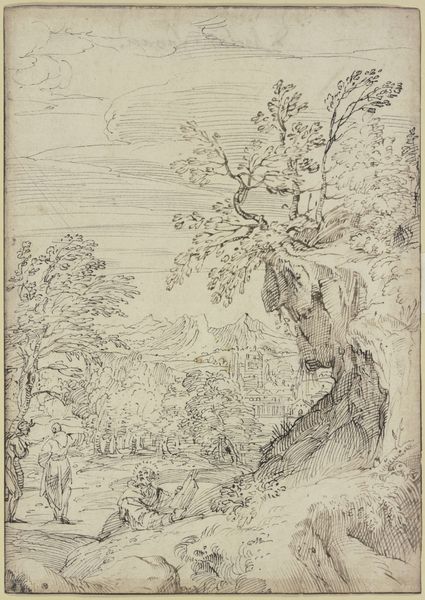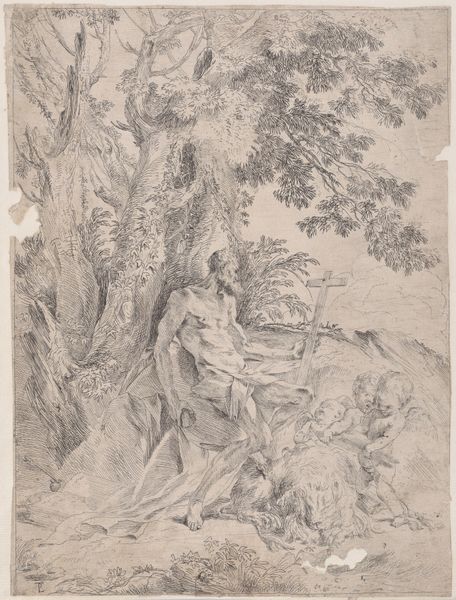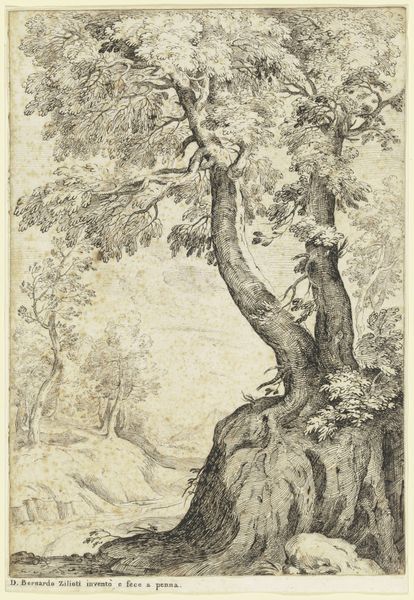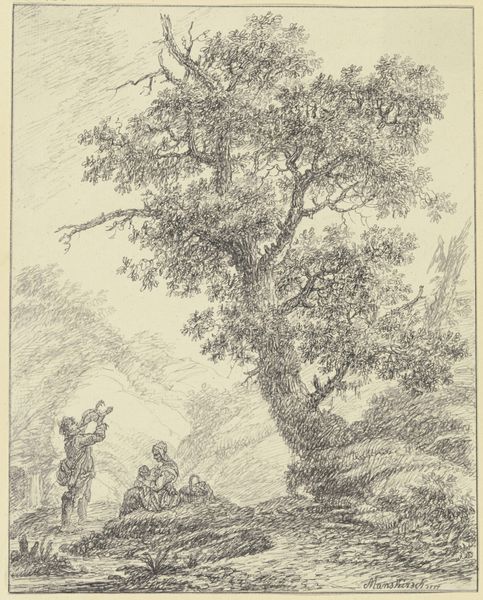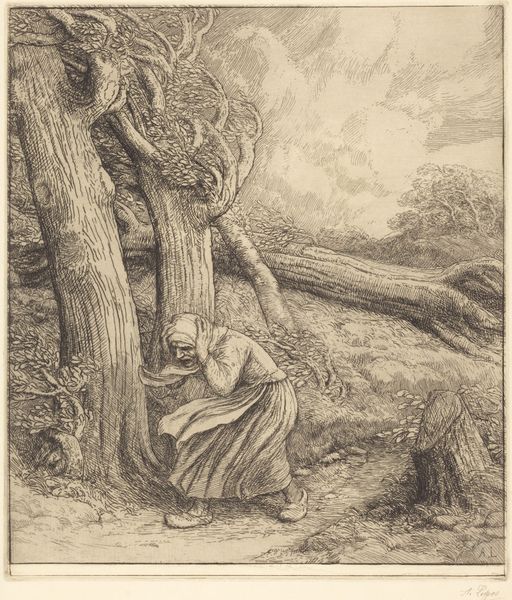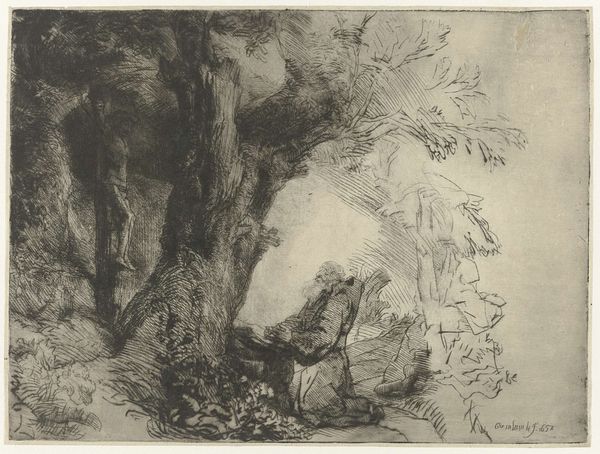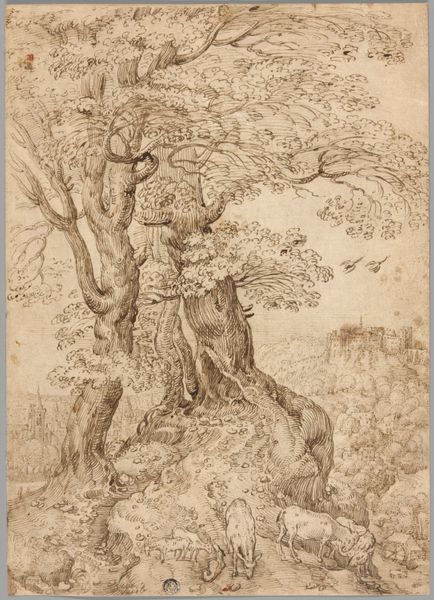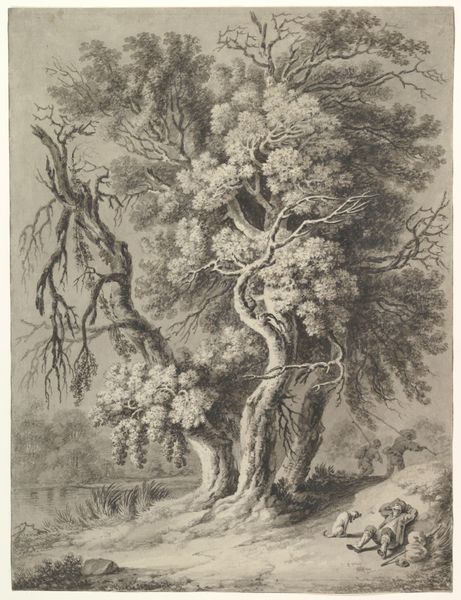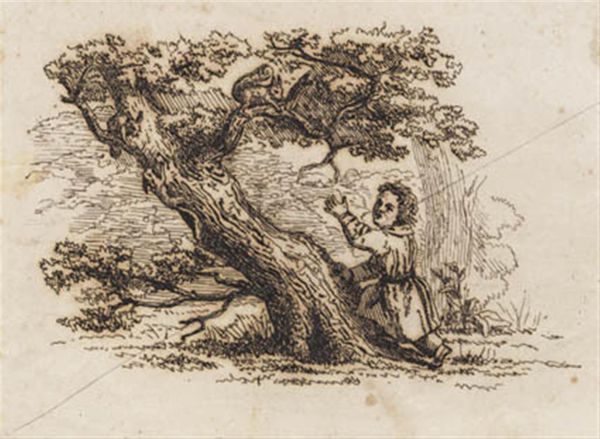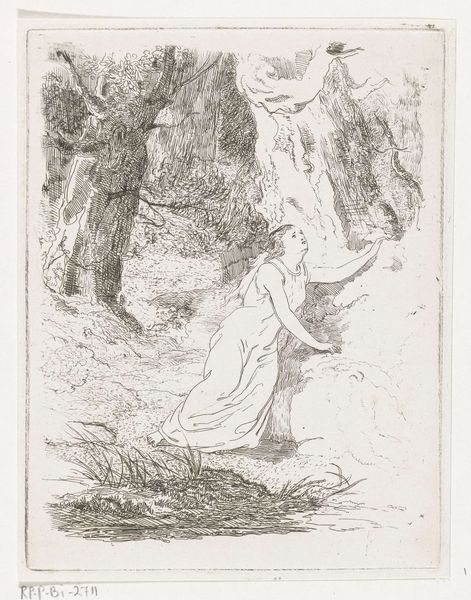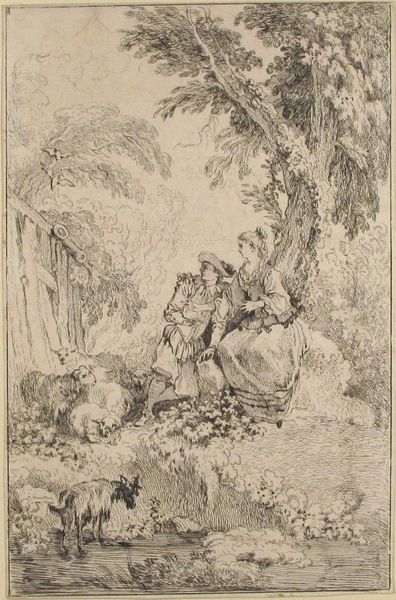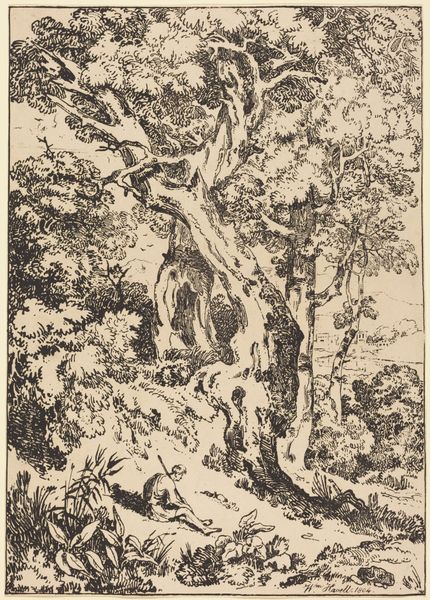
Fotoreproductie van een tekening van Federico Barocci, 'De stigmatisering van Sint Franciscus' 1858
0:00
0:00
drawing, print, photography, pencil
#
drawing
# print
#
pencil sketch
#
landscape
#
charcoal drawing
#
photography
#
pencil drawing
#
pencil
#
history-painting
#
realism
Dimensions: height 359 mm, width 248 mm, height 366 mm, width 280 mm
Copyright: Rijks Museum: Open Domain
Curator: Looking at this print from 1858, "Fotoreproductie van een tekening van Federico Barocci, 'De stigmatisering van Sint Franciscus,'" which translates to a photographic reproduction of a drawing by Federico Barocci titled "The Stigmatization of Saint Francis", I immediately notice its remarkable realism. Editor: Yes, the composition is quite striking. There’s a powerful contrast between the delicate pencil work of the figures and the ruggedness of the landscape. The muted tones evoke a solemn mood, perhaps a reflection of Saint Francis's suffering. Curator: Absolutely, it embodies the historical currents that emphasized the intense emotional and physical experiences, notably of religious figures. This particular interpretation allows a wider audience to experience and study Barocci’s drawing, bringing it to the homes of people who might never have access to the British Museum. It is, after all, labeled “From a drawing in the British Museum”. Editor: You know, I'm drawn to the way light and shadow define the forms, particularly the drapery of Saint Francis's robes and the mystical rays descending upon him. It's a clever use of chiaroscuro. It pulls me into the deeply textured landscape that seems to share equally in importance alongside the narrative itself. Curator: Right, by that time period, photography as a medium held a dual position of reproducing art and also producing original creative explorations, it provided broader access to art while democratizing cultural institutions. And what’s remarkable here is seeing how photography embraced an existing artistic tradition while simultaneously transforming its accessibility. Editor: And from a purely formal perspective, this interplay elevates the work, doesn't it? It gives a somewhat academic, historical subject a strikingly sensory and emotional presence through these sharp contrasts of light, shadow, and detailed, deliberate pencil lines. Curator: I agree. It’s a compelling interplay. It invites us to contemplate the artwork within shifting dynamics between religious devotion, artistic influence, and rapidly expanding accessibility. Editor: Indeed. It provides access but does so in a surprisingly compelling fashion. It invites viewers to a study in tone, shape and religious emotion that proves more immediate than one might expect.
Comments
No comments
Be the first to comment and join the conversation on the ultimate creative platform.

